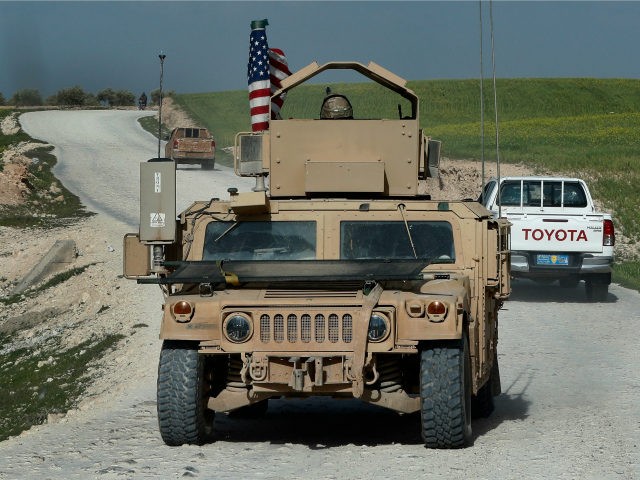U.S. President Donald Trump’s administration is trying to assemble an Arab force “to replace” the U.S. military presence in Syria and help bring stability to the war-ravaged country and the region, the Wall Street Journal (WSJ) learned from unnamed American officials.
The Trump administration has reportedly urged Egypt, Saudi Arabia, Qatar, and the United Arab Emirates (UAE) to devote billions of dollars for reconstruction efforts and contribute troops to a regional force focused on preventing an Islamic State (ISIS/ISIL) resurgence and Iran from expanding its influence.
The Journal explains:
In early April, Mr. Trump spoke about the need to speed the withdrawal of the 2,000 troops the U.S. has in Syria, a position at odds with many top advisers who worry that leaving the country too soon would cede ground to Iran, Russia, their proxies or other extremist groups. The new administration initiative is aimed at avoiding a security vacuum in Syria that would allow Islamic State to return or ceding hard-won gains to Iranian-backed forces in the country.
…
The mission of the regional force would be to work with the local Kurdish and Arab fighters the U.S. has been supporting to ensure Islamic State cannot make a comeback and preclude Iranian-backed forces from moving into former Islamic State territory, U.S. officials say.
It reportedly remains unclear whether the United States will leave behind a residual force.
WSJ learned from the unnamed officials that John Bolton, President Donald Trump’s new national security adviser, already reached out to Abbas Kamel, Egypt’s acting intelligence chief, to see if Cairo would invest in the Syrian effort.
Egypt has one of the largest armies of the Arab world.
WSJ acknowledges that the Trump administration’s plan “faces challenges.”
Charles Lister, a senior fellow at the Middle East Institute, indicated:
Assembling a new force would be a challenge because Saudi Arabia and the U.A.E. are involved militarily in Yemen, and Egypt would be reluctant to defend territory that wasn’t controlled by the regime of President Bashar al-Assad.
Nor, he said, would Arab states be eager to send forces to Syria if the U.S. military didn’t agree to keep some troops there.
Early this month, Brett McGurk, Trump’s envoy for the anti-Islamic State (ISIS/ISIL) coalition, hinted at Trump’s plan to assemble an Arab force to take care of security for its own region.
McGurk noted that the administration is pushing for “regional ownership” of the Middle East conflicts while conducting a routine “review” of U.S. military operations in Syria.
President Trump has said repeatedly in recent weeks that he wants to pull U.S. servicemembers out of Syria “very soon.” However, he authorized strikes against the Assad regime on Friday in response to a chemical attack that the Pentagon asserts the Syrian dictator carried out.
Further chemical attacks at the hands of Assad could force the Trump administration to intensify its involvement in Syria.
“We have asked our partners to take greater responsibility for securing their home region, including contributing larger amounts of money,” President Trump stressed when discussing the strikes on Friday.
Currently, the Russian- and Iranian-backed Assad regime controls more land than during any other time since the beginning of the Syrian civil war in March 2001. The Syrian government holds more territory than all of the other warring parties in Syria, including the U.S.-backed Kurdish forces in the north.
U.S. military officials have conceded that ISIS remains a threat despite the significant blow the American-led coalition and its local allies have dealt the jihadist group.
A U.S. official told WSJ that “5,000 to 12,000” ISIS jihadists are reportedly still operating in Syria.

COMMENTS
Please let us know if you're having issues with commenting.